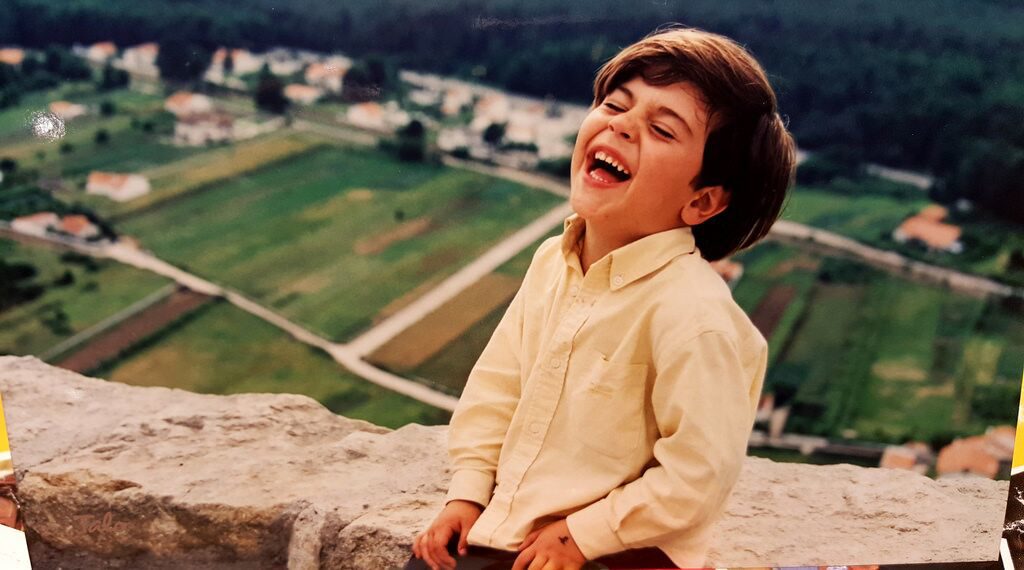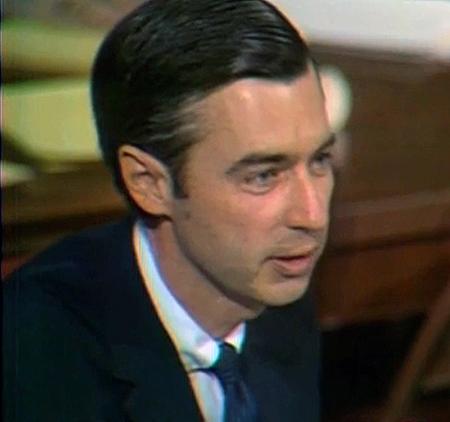My wife and I recently watched the new documentary on Mr. Rogers, Who’s My Neighbor? I highly recommend it for several reasons, but the big takeaway for me was how Fred Rogers pushed through his self-doubt.
The movie opens, for example, with Rogers questioning whether a certain metaphor makes sense. He doubts whether his PSAs after 9/11 will make any difference. And he even has doubts about his eternal destination.
The movie also points to some of Fred Rogers’ failures. Did you know he created a show for adults? It flopped.
Fred Rogers has never been so relatable as in this film!
Nevertheless, despite all his doubts and eccentricity, despite outright ridicule at times, Fred Rogers showed up and conquered his self-doubt so he could do his art. He did not do so all at once, but again and again just as you and I have to do.
Following are five ways we writers can show self-doubt the door and tell it to leave our neighborhood!

1. Care for Your Audience
Fred Rogers knew early on that he wanted to work with young children. The documentary shows him interacting one–on–one with young boys and girls, and it’s mesmerizing. Watching him give his attention absolutely to a child brought tears to my eyes.
And I feel convicted. Do I care about my audience as much as Fred Rogers cared about, and cared for, his audience? We as writers must always remember that we don’t write for faceless masses. We write for real people with real struggles. They need our attention; they need our best.
[Tweet “5 Proven Ways for Writers to Conquer Self-Doubt via @ChadRAllen #askeditor #amwriting”]
2. Remember Why
One thing I was unaware of, which came through crystal in the film, is that Mister Rogers’ Neighborhood developed from a sophisticated philosophy that Fred Rogers believed deeply.
He wanted kids to know they were valuable in a world that too seldom says so. Rogers’ passion to deliver this message drove him for thirty-one seasons.
When we have doubts about what we’re doing, it helps to go back to our originating passion. Why are we in this? Sometimes it helps to encapsulate your why into a brief powerful statement that you can use as a mantra to keep on keeping on.
3. Lean on Friends
I learned from the film that the character in the Neighborhood of Make-Believe most closely identified with Rogers is Daniel Striped Tiger. When we hear the puppet tiger struggle, it’s reasonable to assume we’re hearing Fred Rogers’ struggles, either in his childhood or later.
Often the tiger voices feelings of self-doubt. “I wonder if I’m a mistake,” he says in one episode. But every time, Lady Aberlin or a different character is there to lift him up—to tell him he’s not a mistake.
When Rogers doubts the importance of his Public Service Announcements after 9/11, a friend reassures him. Of course they’re important, she tells him, people listen to what you have to say.
Here’s my question: Who are your people? Who helps you out when you’re facing debilitating doubts about your abilities?
4. Fight
In 1969 President Nixon’s administration was looking for money in the budget to pay for the Vietnam War. Public television was on the chopping block. Senator John O. Pastore held hearings to listen to arguments in favor of public broadcasting, and having listened to hours of testimony, he wasn’t impressed with what he was hearing.

Then Rogers came to the microphone. He gave a heartfelt plea for what he did on Mister Rogers Neighborhood. Following is an excerpt of his remarks:
“This is what I give. I give an expression of care every day to each child, to help him realize that he is unique. I end the program by saying, ‘You’ve made this day a special day, by just your being you. There’s no person in the whole world like you, and I like you, just the way you are.’ And I feel that if we in public television can only make it clear that feelings are mentionable and manageable, we will have done a great service for mental health.”
The senator was touched. “Looks like you just earned the $20 million.”
Listen. If your writing is important, and it is, you are going to face opposition. You may not have to face a hostile government, but you will face forces that are just as if not more destructive to your art. These forces can come from inside you—laziness, feelings of inadequacy, lack of confidence, complacency. Or they can be external—Netflix, competing demands for your time, the distractions of social media.
The only way for us to combat this Resistance, to use Steven Pressfield’s term, is to fight—and keep fighting until we’ve done what we feel called to do.
5. It’s OK to Fail
Fred Rogers’ drive to make the world a better place led him eventually to try his hand at programming for adults. He hosted a series called Old Friends . . . New Friends, in which he interviewed well-known people about the meaning of life.
Mister Rogers’ Neighborhood lasted for over nine hundred episodes. Old Friends . . . New Friends didn’t make it past twenty. In other words, it didn’t catch on. It failed.
But so what? Knowing failure was a real possibility, Fred Rogers wasn’t afraid to try, and neither should we. Seth Godin said, “You can’t have good ideas unless you’re willing to generate a lot of bad ones.” We have to try again and again. We have to show up and do our art. It’s OK to fail, it’s not OK to stop.
[Tweet “It’s OK to Fail” and 4 other ways to conquer self-doubt via @ChadRAllen #askeditor #amwriting”]
[reminder]Which of these Fred Rogers–inspired takeaways is your favorite?[/reminder]
This post is terrific! There is so much here that I love. My favorite takeaway is this:
“We as writers must always remember that we don’t write for faceless masses. We write for real people with real struggles. They need our attention; they need our best.”
Chad, I just heard about you from a talk I listened to by Jennifer Dukes Lee. You have such a helpful site! This post is so encouraging. I especially appreciate the point about caring for your readers. And now my curiosity is piqued to watch that documentary.
Betsy, thanks so much for visiting and taking the time to comment. Many thanks to Jennifer Dukes Lee! I’m glad this post has been helpful to you, Betsy, and I think you’d enjoy the documentary. Take care!
This is timely and encouraging. We all wrestle with self doubt. I’ll remember my why and keep moving.
We saw this yesterday – so well done and we cried, of course. And you post encapsulated so much here that’s greatly encouraging (so tweeted!) I can easily forget the why and the people behind my writing/message. He never did. And I too noticed his self-doubt. Which God uses of course, but it’s good to observe vulnerability in greatness. And as my brother told me once, You learn more in failure, Sue.
Doesn’t mean I like it! thanks, Chad